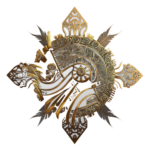Testimonial
History
The Three Treasures of Jing, Qi and Shen is a familiar concept in Eastern energy arts and internal alchemy.
Several Oriental spiritual practices include development of the three treasures. In this instance, the set is part of a martial development regiment in the ‘old school’ approach where martial and energy development is combined.
The Set
The three treasures as taught by Lujan Matus is a movement form, and a very energetic one at that. It is a multi-level practice complete in itself, and is also designed to include two other martial sets. Each martial set is included into the Three Treasures form once it has been learned. This makes of the Three Treasures set a cauldron in which internal alchemy is performed.
Martial forms
Not only does the Three treasures infuse the martial forms with energy, but they in turn feed the practice of the Three Treasures. This is possible mainly because the martial forms follow lines of motion determined by the flow of various energies in the body and the energy field around it.
The martial sets incorporated into the Three Treasures are
1. The Jaguar Series
2. The Small Mountain Series
Once both martial forms have been learned they are performed inside the Three Treasures set.
Holistic Practice
As such, performing the martial sets is in fact performing qi gong, martial gong and nei gong. This is in contrast to most martial arts where energy is developed in one practice (qi gong) so that it may be applied in other (martial) sets. This built-in efficiency in training saves time with no loss of effectiveness.
At another level, the energy development in this set involves development in Jing, Qi and Shen in one form. There is no segregation where these energy types are developed individually. Again this makes for dealing with the three energy types as they appear in ‘real life’, all operating at the same time.
This is typical of the ancient Chinese shamanistic approach to spiritual development in that it does not seek to theorize, but to realize through being practical. The practice allows for ‘spiritual’ development as a primary goal while ensuring the nurturing of energies required to realize this spirituality.
Requirements
The set can be learned by itself without having attended any previous trainings. In such a case, it may be said that the form is learned in three stages:
Stage 1: is learning the Three Treasures set, with one movement from the Jaguar series and one movement from Small Mountain Series.
Stage 2: Learning the Jaguar Series -which is then fully incorporated into the Three Treasures set.
Stage 3: Learning the Small Mountain Series -which is then fully incorporated into the Three Treasures set.
Stage two and three may be interchanged, depending on the student.
The Experience
Learning the Three Treasures in a one-on-one context allowed for a completely customized approach. Lujan releases to the student what he or she can absorb at the time above the ‘standard’ set. This pertains to details such as posture, ability (including ability to recall), etc.
Because the set fits into a larger framework of personal development, such details are highlighted where applicable.
As usual, Lujan begins form training only after a discussion -of the length required, to deal with any issues that arise or have arrived with the student. This time is most enlightening since Lujan refuses to be drawn into dramas or to be positioned by the rampant ego-mind of the student. The student faces an empty being who acts (amongst other things) as a mirror. This means items are continually pushed back onto the student for review and resolution. While this involves concepts familiar to the ‘Toltec Teachings’, the intention is not to sell or teach that path, but to empower the student to see and resolve issues in the now. One of my most profound experiences and learning regarding ‘recapitulation’ took place in a Three Treasures training session.
I had learned most of the Jaguar Series before so my training involved stage 1, as well as learning the remainder of the Jaguar series (stage 2).
I recommend this training especially for those who prefer a movement orientated approach -or shall I say, and approach that honors the body as an integral part of development.
Henk
